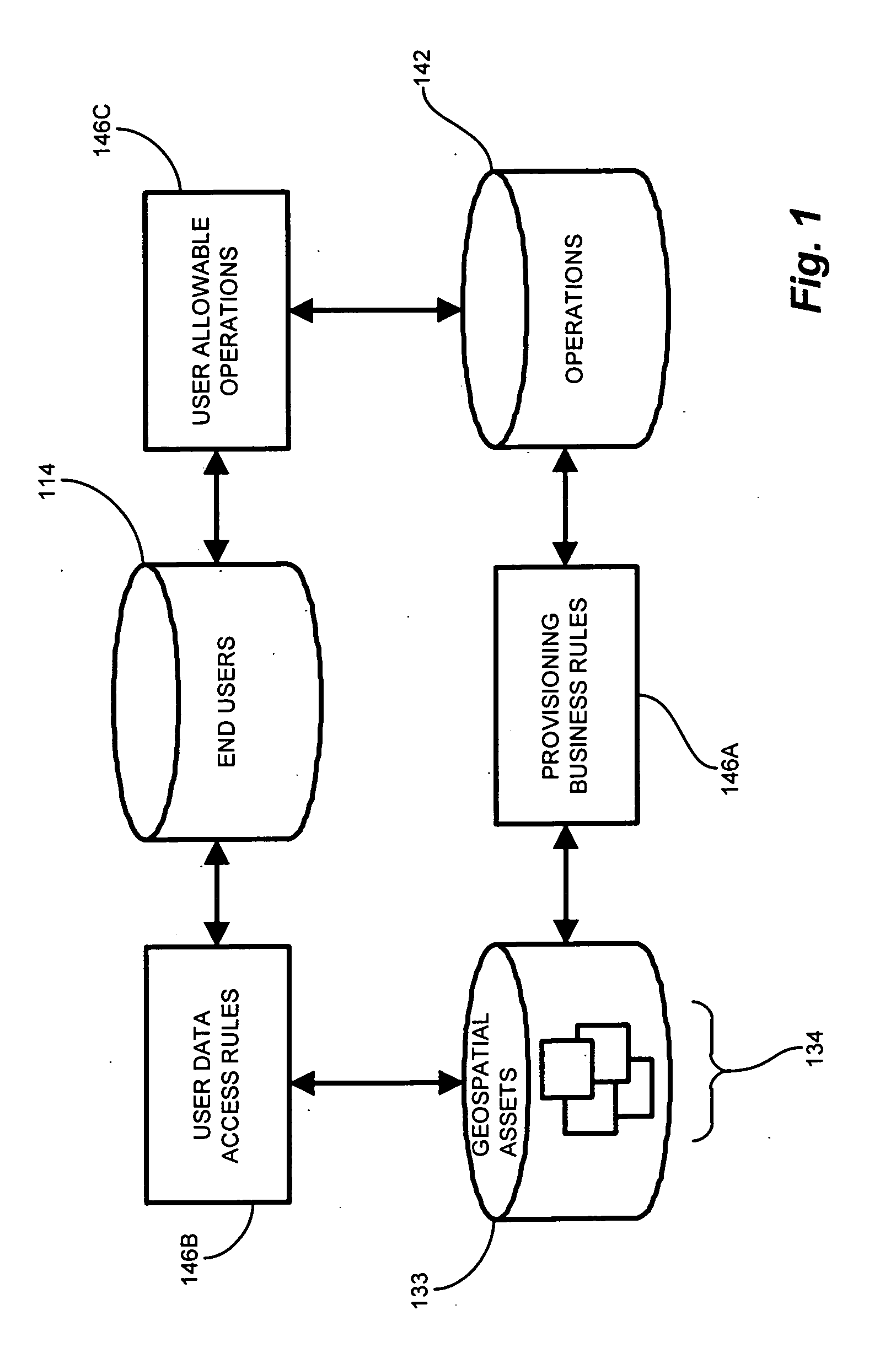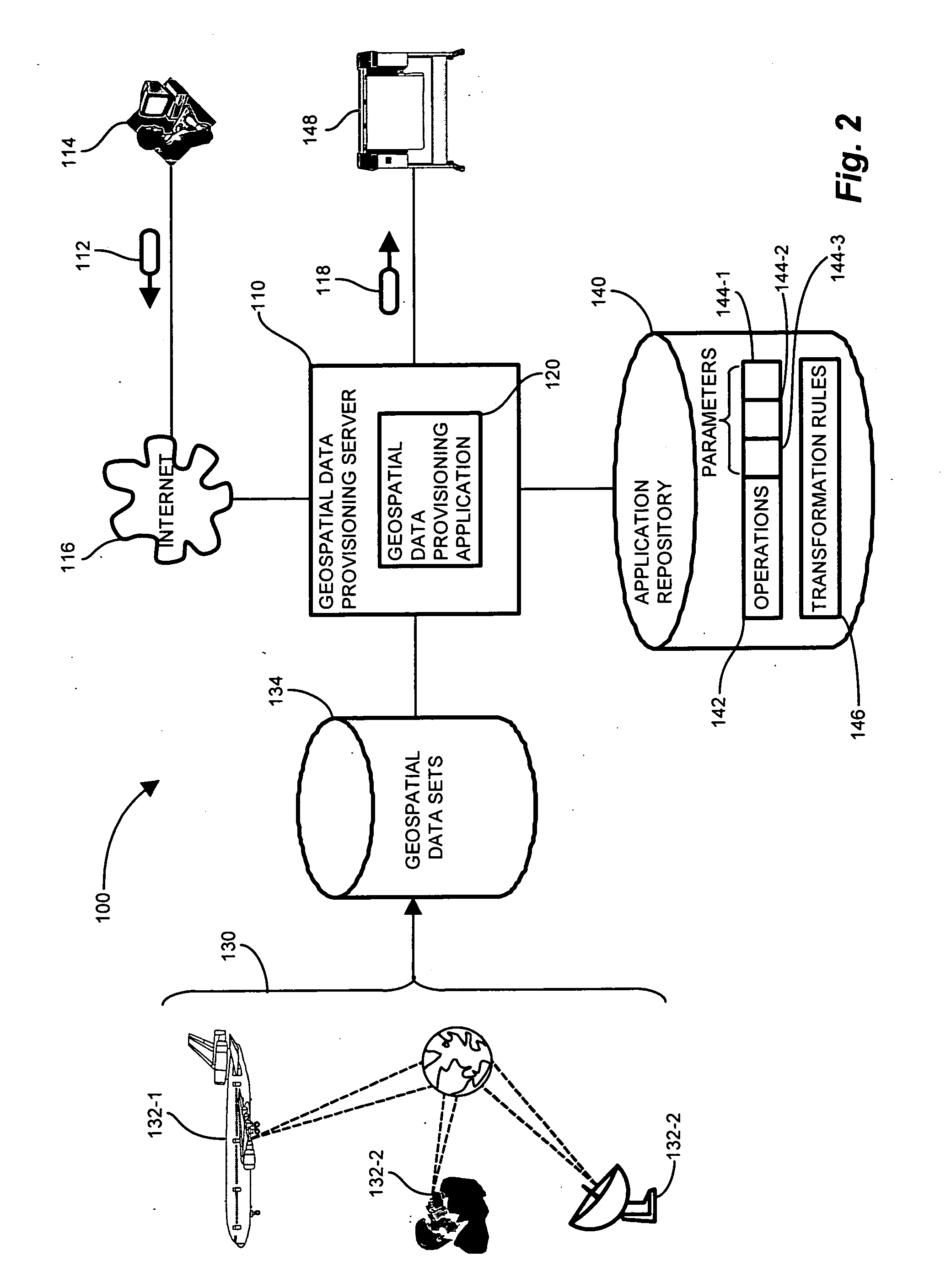Methods and apparatus for providing a configurable geospatial data provisioning framework
a geospatial data and configuration technology, applied in the field of methods and apparatus for providing a configurable geospatial data provisioning framework, can solve the problems of inability to realize the potential effectiveness of information, difficulty in reducing errors, and difficulty in reducing so as to reduce errors and reduce the skill level of the end user.
- Summary
- Abstract
- Description
- Claims
- Application Information
AI Technical Summary
Benefits of technology
Problems solved by technology
Method used
Image
Examples
Embodiment Construction
[0044] Configurations discussed further below provision geospatial data in such a manner that users may search for existing available geospatial data sets concerning an area of interest, define available geospatial operations for the geospatial data sets by selecting in a point-and-click manner, and generate the resulting geospatial output data sets by applying the selected geospatial operations to the data sets. The interactive geospatial data provisioning application provides a graphical user interface operable to present a map of geographic regions and the corresponding geospatial data sets available. The user selects the area of interest by searching, panning and zooming over the mapped regions which outline and identify portions covered by the available geospatial data sets. The geospatial data provisioning application identifies geospatial data sets within the area of interest. By analyzing the attributes available in the identified geospatial data sets, the geospatial data pr...
PUM
 Login to View More
Login to View More Abstract
Description
Claims
Application Information
 Login to View More
Login to View More - R&D
- Intellectual Property
- Life Sciences
- Materials
- Tech Scout
- Unparalleled Data Quality
- Higher Quality Content
- 60% Fewer Hallucinations
Browse by: Latest US Patents, China's latest patents, Technical Efficacy Thesaurus, Application Domain, Technology Topic, Popular Technical Reports.
© 2025 PatSnap. All rights reserved.Legal|Privacy policy|Modern Slavery Act Transparency Statement|Sitemap|About US| Contact US: help@patsnap.com



